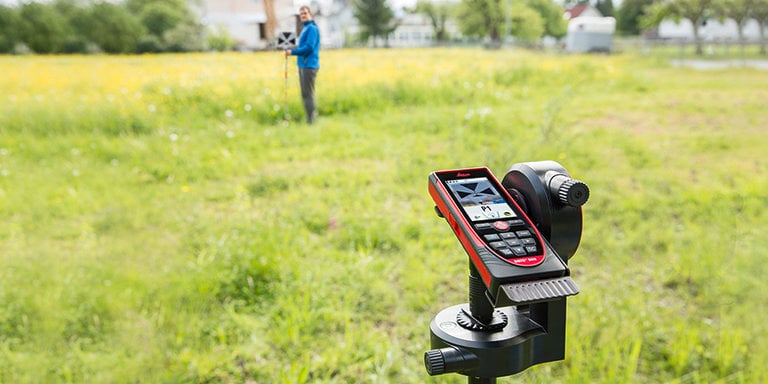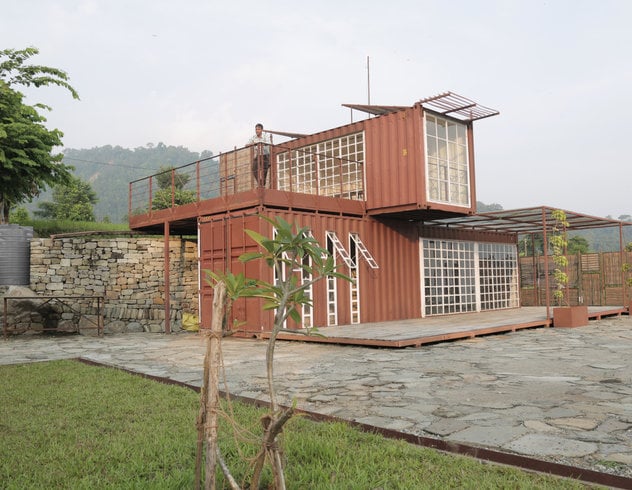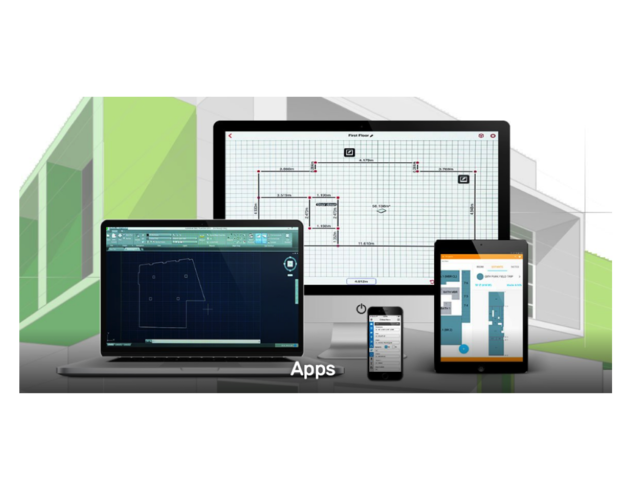I bet I know what you are thinking: asking us, a company that sells Laser Distance Meters (LDMs), what to look for when you buy an LDM is like asking a car salesman what you should look for in an automobile. And I bet you're thinking this, too: why should you listen to me?
I was in the lab working on another project when Leica engineers invented the first LDM in the early 90s. I thought, "That's neat, but who the hell is going to buy one?" 10 years later, I was the Global Sales Manager for Leica DISTO. I have been involved in the design, production, and distribution of these cool tools ever since. And I can tell you from first-hand experience that not all LDMs are the same.
From what I've learned about LDMs during my career at Leica Geosystems, this is what you need to look for in an LDM.
10 "Must Have" Features for a Laser Distance Meter
- ISO rating – When you’re looking at LDMs, an ISO rating helps you compare different models with the same criteria. It is like the 0-60 MPH times in a Consumer Reports car review: you know what kind of performance to expect and everyone is judged the same way.
-
Certificate of Accuracy – When you are buying a precision measurement tool, how do you know that the company that produced it made sure it was accurate before it left the factory?
Look for a Certificate of Accuracy with the actual measurements of your LDM on a calibrated range. This is different than a “certificate of compliance," which is only a generic certificate for all tools that meet a certain standard, but not specifically for your LDM.
Knowing that the tool is certified for compliance is good, but not good enough. I want to see that MY tool is accurate and what the actual measurements are, not just the average for tools produced that month.
Every Leica Geosystems LDM is tested on a range calibrated with a precision Leica Geosystems Absolute Distance Meter (ADM), which is typically used by metrologists and engineers. ADMs are used to build ultra-precise assemblies like aircraft and particle accelerators, and that's the kind of standard we need when certifying the accuracy of our laser distance meters.
Measurement is what we do. If you want to take deep dive into how precise ADMs can be, check out this white paper about ADMs from our sister company, Hexagon Metrology.
-
No moving parts - If you hear “click-click, click-click” when you hit the button on an LDM, you are using older technology that is based on the same principle as the mechanical shutter on a camera.
A clicking LDM is like a smartphone with a rotary dial. Moving parts, including small buttons, are more likely to break from a drop and are not as reliable as a solid-state tool. You are buying a high-tech tool, so make sure you get the latest technology.
-
An automatic or "intelligent" end-piece – Many common measurements like measuring a door, a window rough opening, or across foundation forms to check square are diagonal measurements that require getting your LDM into a corner. The problem is that the thickness of the base of an LDM means you can't get it all the way into the corner, so your measurement will be off by the distance between the back of the tool and farthest reach of the corner.
The best way to counter that is by using a flip-out extension that is thin enough to fit all the way into the corner. This addition to the back of the LDM makes the endpoint of the LDM narrow enough to extend into a corner, but it is crucial that the device knows that it is now measuring from a point that is behind its base.
On some LDMs you have to manually move the measuring point, so if you forget that step, your measurements will be off. That's why you want an automatic end piece connected to the circuit board so that when you flip it open, it tells the device that the distance measured should be corrected by the length of the end-piece and you don't have to think about it.
-
Configurable “beep” sound – It sounds like a no-brainer, but having a sound that tells you a measurement has been taken successfully is key. It is a small but very useful feature. Make sure you can switch the beep on and off. Some more sophisticated models even change the tone of the beep to alert you if you are measuring from the front versus the rear of the tool.
-
Backlit display – Another seemingly small but useful feature if you are measuring indoors or in poor lighting. Newer models have a small photo-sensor that switches the backlight on and off automatically.
-
IP54 rating – IP stands for “Ingress Protection," which is a set of standards that indicate resistance to dust and moisture. The first number refers to dust and the second refers to water. The higher the number, the better the protection.
You'll find IP40 products out there, and those offer virtually no protection. In contrast, an iPhone 8 has an IP67 rating, which means that dust cannot get in and you can drop it in 1 meter of water for up to 30 minutes. For a professional-quality tool, don’t buy anything below IP54 – protected against dust and resistant to splashes of water. You can get it dusty or damp like you would a cordless drill, just make sure you dry it off before you put it in a case.
If you are using an LDM on active job sites, look for IP65, which means dust-proof and water jet protected. And when we say "water jet protected," we mean it – check out how we test our Total Stations to make sure they meet the IP65 standard.
-
Realistic working temperature range – Cold winters and hot summers are unkind to electronic tools. Check the storage and working temperature ranges for an LDM before you buy one. The pro-grade tools are rated for storage from -10 to 70 °C (-13 to 158 °F) and for operation from -10 to 50 °C (13 to 122 °F). Sounds crazy hot and cold? Think about the temperature extremes the inside of your truck might see on a hot day or cold night!
-
Two year warranty (minimum) – Peace of mind, plain and simple. Most reputable manufacturers offer a simple exchange policy when things go bad, and we offer a three year warranty exchange program on our LDMs.
-
Metal thread tripod socket – If your measuring jobs require you to use functions like Pythagoras calculations or height tracking, you need to hold the tool steady and a tripod is really a must-have. If you are mounting and removing an LDM from a tripod often, the plastic threads used on cheaper LDMs get cross-threaded, worn, or cracked over time.
Look for a metal thread tripod socket on your next LDM, like those on our DISTO laser distance meters, and you’ll be glad you did.



